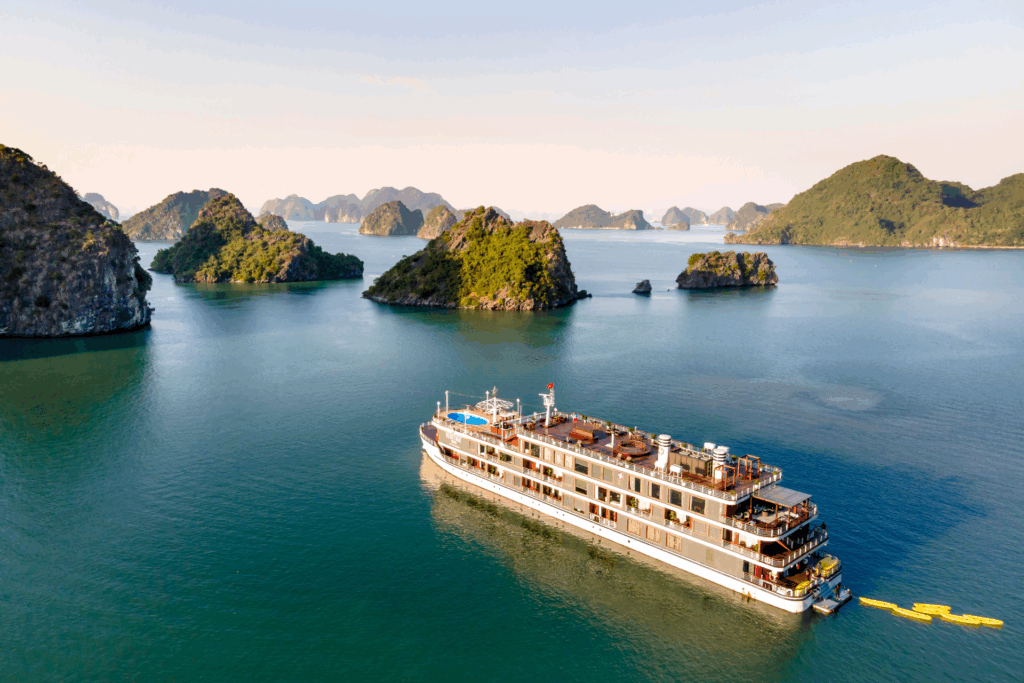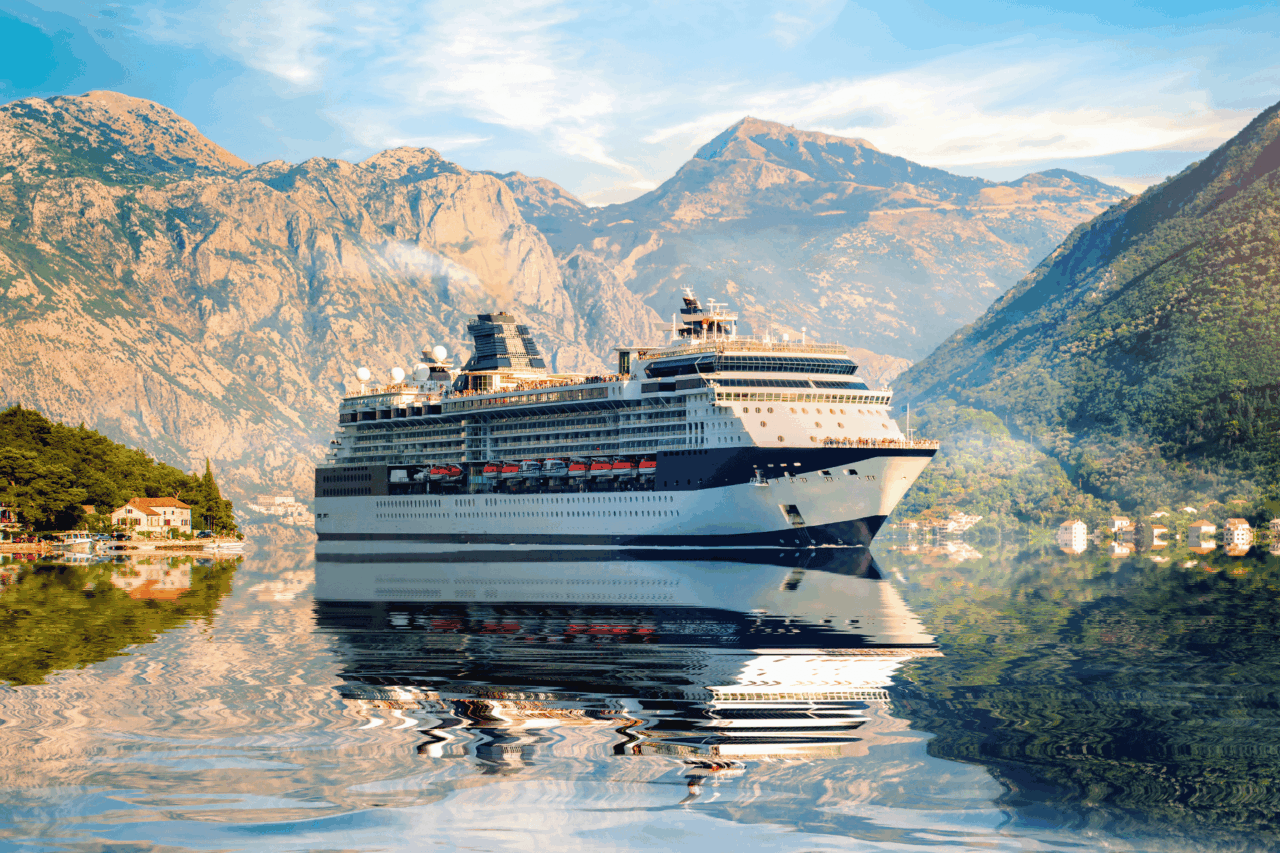The Luxury industry continues to redefine what it means to travel in style, merging innovation, exclusivity, and sustainability to meet the evolving desires of discerning consumers. Within this dynamic sector, cruising has transcended traditional travel, evolving into a sophisticated and transformative experience for the discerning traveler. With luxury cutting-edge innovations and a heightened focus on sustainability, the cruise industry is embracing an exciting new era of growth. As the sector adapts to modern expectations, it continues to provide a compelling way to explore the world in a more responsible and enriching manner.
The 2025 State of the Cruise Industry Report by Cruise Lines International Association (CLIA) presents a compelling look at one of the world’s most dynamic travel sectors. With 34.6 million passengers setting sail in 2024, the cruise industry is not only back on course but cruising toward a new era of growth.
Driven by rising demand among younger travelers, enhanced onboard experiences, and cutting-edge sustainability efforts, the sector is evolving to meet the expectations of modern explorers. The report highlights strong traveler satisfaction, economic impact, and a forecast of 42 million cruisers by 2028. As the industry embraces innovation and responsibility, cruising is increasingly seen as one of the most desirable and future-ready ways to travel the world.
In this report summary, the World Luxury Chamber of Commerce highlights key insights into the Cruise Industry from 2025.
Industry Overview and Current Landscape
The global cruise industry has demonstrated exceptional resilience and consistent growth over recent decades. In 2024, a total of 34.6 million people chose ocean cruising as their preferred form of travel. This marks a 9.3% increase from 2023 and a clear signal of the industry’s recovery and upward momentum. North America remained the largest source market, followed by Europe and Asia/Oceania.
Despite these impressive figures, cruising still represents just 2.7% of the overall international travel and tourism sector. This highlights a significant opportunity for further growth and market expansion. The Caribbean, Bahamas, and Bermuda remained the top destination choices, attracting nearly half of all cruise passengers. The Mediterranean followed as a strong secondary destination. Seasonally, the third quarter—typically encompassing the summer months—continues to be the busiest period for cruise travel.
Looking at the industry’s long-term performance, passenger volume has increased from 1.9 million in 1985 to more than 34 million in 2024, reflecting its ability to grow even in the face of economic uncertainty.

Cruise Travelers: Who They Are and What They Want
Cruise travel in 2024 was marked by increasing diversity in both demographics and travel preferences. Trends show a rising interest from younger travelers, more frequent and longer voyages, and a growing emphasis on personalized and family-oriented experiences.
- Younger demographics rising: Average passenger age is 46.
- Over one-third are under 40, signaling growing interest from Gen X, Millennials, and Gen Z.
- Cruise intent is higher among younger generations than before the pandemic.
- There is an increased travel frequency: Nearly 50% plan longer cruises than they did previously, and more passengers are booking trips over a year in advance.
- Solo travel growth: 12% of cruisers traveled alone in 2024—double the rate from 2023.
- Multi-generational travel remains strong: 28% cruised with family spanning 3 to 5 generations.
- Baby Boomers are a key segment prioritizing shared travel experiences with spouses, grandchildren, and extended family.
Industry Growth and Outlook
The global cruise industry has a strong upward trajectory, with continued growth anticipated in the coming years. Much of this momentum is being driven by the introduction of new, high-capacity ships designed to deliver richer experiences in shorter durations. As of 2025, the global fleet has expanded to include over 310 ocean-going vessels, offering more than 650,000 lower berths worldwide. Interestingly, the majority of these ships fall within the small to mid-size category—a trend that is expected to persist well into the next decade, reflecting evolving passenger preferences for more intimate and destination-focused cruising.
Luxury and expedition cruising represent particularly dynamic areas of growth. Since 2010, the number of luxury cruise ships has more than tripled. By 2028, it is projected that approximately 1.5 million travelers will opt for a luxury cruise experience. This surge is fueled not only by increasing consumer demand but also by the support of travel advisors, who are reporting significant rises in bookings for premium and luxury segments.
Cruise travel continues to outperform other vacation types in customer satisfaction, frequently receiving higher ratings than land-based tours or hotel packages. Travel professionals play a pivotal role in this success. Nearly 80% of cruise passengers say their decision to book a cruise was influenced by a travel advisor, whose guidance helps match them with the most suitable ships, itineraries, and onboard experiences.
Sustainability and Innovation
As the cruise industry looks to the future, sustainability has become a core focus. Cruise lines are investing in innovative technologies, alternative fuels, and cleaner infrastructure to reduce their environmental footprint and move toward net-zero carbon operations:
- Major investments in green technology are being made, including advanced propulsion systems, energy-efficient engine designs, and digital tools that optimize routes and reduce fuel consumption.
- Onshore Power Supply (OPS) is a key innovation, allowing ships to plug into local electric grids while docked, reducing port emissions by up to 98%, depending on the local energy source.
- More than 30 ports worldwide are currently equipped with OPS, with many additional ports in the planning or development stages.
- Alternative fuel exploration is underway, including the use of green methanol, bioLNG, hydrogen, solar energy, wind power, and battery storage. Future ship designs are being built to support fuel efficiency.
- Collaboration with governments is seen as essential to scale access to alternative fuels and meet long-term decarbonization goals.
- The cruise industry has collectively committed to achieving net-zero carbon cruising by 2050, with current actions focused on innovation, infrastructure development, and close coordination with ports and local communities.
Economic Contribution and Community Impact
Cruise travel delivers substantial economic value worldwide, driving job creation, regional growth, and local business support through the following impacts:
- The global cruise industry generated a record-breaking $168.6 billion in total economic impact in 2023.
- It supported approximately 1.6 million jobs worldwide and contributed nearly $57 billion in wages to the global economy.
- In the United States, the cruise industry produced an economic impact of $65.4 billion, while Europe recorded €55.3 billion.
- Other regions, including Canada, Australia, New Zealand, and Brazil, also experienced substantial economic gains from cruise activity.
- Together, North America and Europe accounted for over 75% of the cruise industry’s total global economic output.
- Cruise passengers significantly contribute to local economies beyond their time on board, with 60% choosing to stay in the port city prior to embarkation.
- Additionally, 54% of travelers extend their stay after disembarking, further supporting local businesses.
- Most of these pre- and post-cruise visitors book hotel accommodation, helping to sustain jobs in the hospitality, food service, and transportation sectors.
The growing cruise industry doesn’t just bring passengers—it brings meaningful contributions to the cities and communities it touches on. Through responsible tourism partnerships, environmental leadership, and economic opportunity, cruising continues to show its value not just as a vacation option, but as a dynamic and evolving part of global travel.
To read the full report by CLIA, visit: https://cruising.org/resources/state-cruise-industry-report-2025
Stay up to date on the latest luxury industry news: https://worldluxurychamber.com/insights-news/





